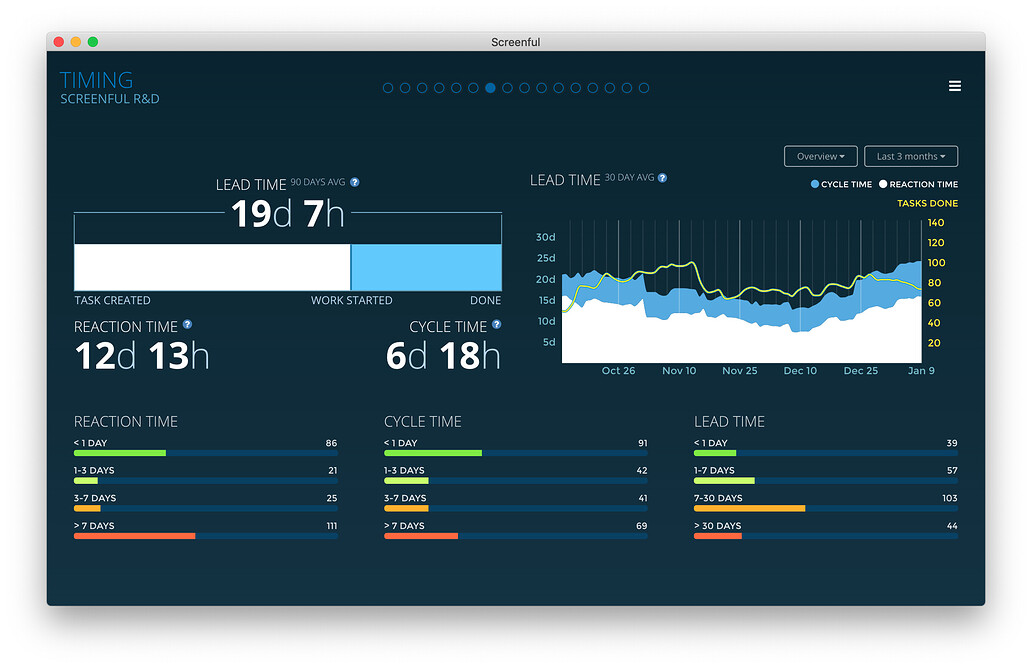What is knowing the current position, future position and route of your railcars worth? Is it “Peace of Mind” by simply knowing where they’re at and where they’re going? Or is there another quantifiable value?
Setting Expectations.
The cycle time you expect to achieve should be vetted with the railroads over which you expect to transport your product(s). The “guess” of what the cycle time should be isn’t good enough to truly derive maximum value for your shipment planning. When you’re looking at improving the performance on your shipments it’s important to get everyone involved on the same page, in particular the railroads handling the railcars in which you transport your product(s). This vetting process should, at the very least, include local industry transportation professionals (train masters, shipping forepersons, train crews of the industry originating the shipment), consultants, your customer(s) if it’s not an internal move and others who have a vested interest in the timely movement of your railcars. The rail industry is a bit confusing where the master plan of many railroads resides in their headquarters and those executing it at the track level don’t always see and/or comprehend the arrangements necessary to support your entire railcar movement.
Given the on-going supply chain issues, including rail service, setting expectations is even more critical at this juncture. There hasn’t been a service meltdown of this magnitude since the late 1990’s merger with the Southern Pacific Railroad by the Union Pacific Railroad.
Understanding Your Route.
Each cycle time expectation follows a certain route. This route may be a single line shipment from A to B or a joint or multi-line shipment involving more than one railroad. The importance of understanding your route is paramount to obtaining the best rate and service option available. The railroads retain the right to move your rail equipment along any route they so choose; however, if you have your route identified, you’ll build a case for cycle time performance and for freight rate expectations. This is extremely important when transcending multiple route movements.
Case in point.
On behalf of our customer, we negotiated with a Class 1 carrier for an interchange location on a shipment that ran from Nevada to Oklahoma. The route went through the furthest interchange the originating carrier could take the railcars, hoping to capture the lions-share of the revenue. Our research indicated a different interchange point would be more advantageous from a freight and service perspective. We unwound the through rate and established Rule 11 rates in their place. The savings in the rail rate is tracking at $425 per railcar load. The savings in railcar costs (lease & maintenance) is expressed in per ton costs is tracking at 65% of what we’d projected using the railroad original proposal. Now this is real value!
Performance Measures.
In most cases performance is measured by the number of cycles a railcar can make in a certain time frame. This is often expressed as trips per month. To adjust for seasonality, cycle time is sometimes expressed as trips per year which helps capture the cyclical nature of the business. The next level of detail is really important in understanding your railcar movements on both a loaded and empty pattern. Digging into the cycle details such as time at origin either loaded or waiting to get loaded, time from release as a load to constructive placement, time from constructive placement to spotting at the customer, customer (unload) time, time from spotting to release of empty railcar, time from release of empty to constructive placement to spotting as an empty waiting for the next load, etc. Even for industries such as plastic pellets where railcars are typically used as storage, these measurements are critical for understanding cost centers allowing for storage of product using the railcar as a storage vessel.
Quantifiable Example.
In our example above we calculated a per trip savings of $425 per railcar load due to rail rate savings by moving the interchange location on the loaded railcars. Quantification of the railcars required to support the movement saved the customer rent and maintenance on five additional railcars, e.g. the customer required five less railcars to haul their product due to choosing the faster interchange location. That equates to around $425,000 in railcar purchase costs, or $33,000 in annual rent and maintenance costs. That is a significant amount and we have experienced many of these examples where we’ve successfully impacted the customers bottom line.
Quantification can be measured by less railcars needed to transport the same amount of product, better cycle times due to research of corridors in which your railcars travel (loaded and empty), reduced demurrage, reduced ancillary charges for holding railcars for billing, weights, etc., lower railcar maintenance costs and conversely having railcars readily available to take advantage of market conditions when you need them.
There is real value in planning and measuring your rail shipment and railcar empty return movements. Setting out on a continuous improvement path generally proves to be a profitable undertaking. If you’d like to discuss options, line up a scope of work or have questions, give us a call.
Let’s Create Value Together.
Tealinc is a railcar lessor, railcar management and consulting firm. Contact us for an evaluation of your rail transportation situation. We’re always engaged and care about generating positive results be it a railcar lease, management of your rail assets or providing exemplary consulting results. We’re looking forward to creating true value with you!

